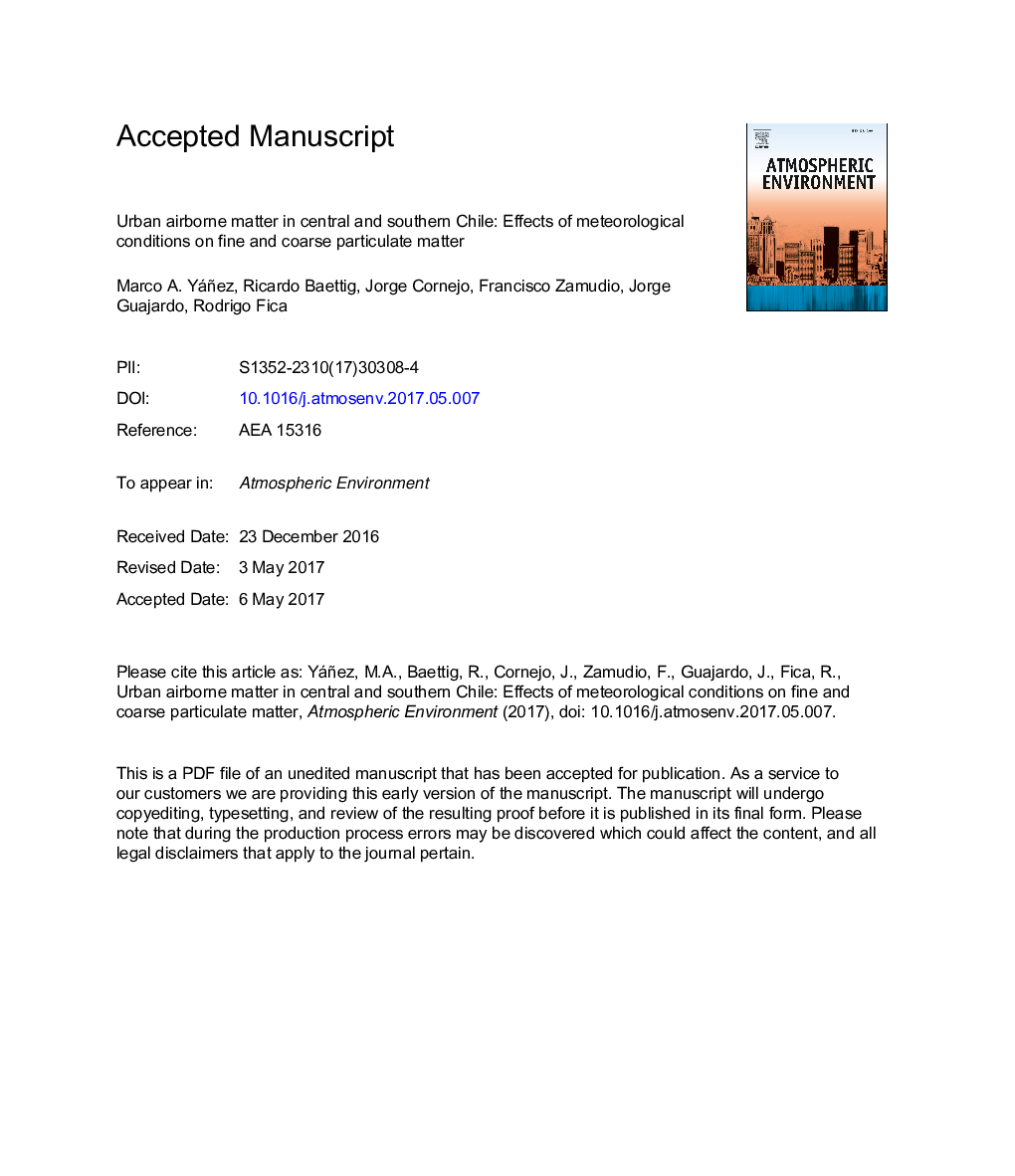| کد مقاله | کد نشریه | سال انتشار | مقاله انگلیسی | نسخه تمام متن |
|---|---|---|---|---|
| 5753246 | 1620313 | 2017 | 33 صفحه PDF | دانلود رایگان |
عنوان انگلیسی مقاله ISI
Urban airborne matter in central and southern Chile: Effects of meteorological conditions on fine and coarse particulate matter
ترجمه فارسی عنوان
ماده شهری هوایی در مرکز و جنوب شیلی: تأثیر شرایط هواشناسی بر ذرات ریز و درشت
دانلود مقاله + سفارش ترجمه
دانلود مقاله ISI انگلیسی
رایگان برای ایرانیان
موضوعات مرتبط
مهندسی و علوم پایه
علوم زمین و سیارات
علم هواشناسی
چکیده انگلیسی
Air pollution is one of the major global environmental problems affecting human health and life quality. Many cities of Chile are heavily polluted with PM2.5 and PM10, mainly in the cold season, and there is little understanding of how the variation in particle matter differs between cities and how this is affected by the meteorological conditions. The objective of this study was to assess the effect of meteorological variables on respirable particulate matter (PM) of the main cities in the central-south valley of Chile during the cold season (May to August) between 2014 and 2016. We used hourly PM2.5 and PMcoarse (PM10- PM2.5) information along with wind speed, temperature and relative humidity, and other variables derived from meteorological parameters. Generalized additive models (GAMs) were fitted for each of the eight cities selected, covering a latitudinal range of 929Â km, from Santiago to Osorno. Great variation in PM was found between cities during the cold months, and that variation exhibited a marked latitudinal pattern. Overall, the more northerly cities tended to be less polluted in PM2.5 and more polluted in PMcoarse than the more southerly cities, and vice versa. The results show that other derived variables from meteorology were better related with PM than the use of traditional daily means. The main variables selected with regard to PM2.5 content were mean wind speed and minimum temperature (negative relationship). Otherwise, the main variables selected with regard to PMcoarse content were mean wind speed (negative), and the daily range in temperature (positive). Variables derived from relative humidity contributed differently to the models, having a higher effect on PMcoarse than PM2.5, and exhibiting both negative and positive effects. For the different cities the deviance explained by the GAMs ranged from 37.6 to 79.1% for PM2.5 and from 18.5 to 63.7% for PMcoarse. The percentage of deviance explained by the models for PM2.5 exhibited a latitudinal pattern, which was not observed in PMcoarse. This highlights the greater predictability of PM2.5 according to meteorological parameters in the cities to the south. Southern cities located spatially close to one another had similar patterns in both the selected variables for the models and the trends. The meteorological factor influencing the cities had a major impact on PM concentrations. The findings of this study may aid understanding of PM variation across the country, in the way of improving forecasting models.
ناشر
Database: Elsevier - ScienceDirect (ساینس دایرکت)
Journal: Atmospheric Environment - Volume 161, July 2017, Pages 221-234
Journal: Atmospheric Environment - Volume 161, July 2017, Pages 221-234
نویسندگان
Marco A. Yáñez, Ricardo Baettig, Jorge Cornejo, Francisco Zamudio, Jorge Guajardo, Rodrigo Fica,
